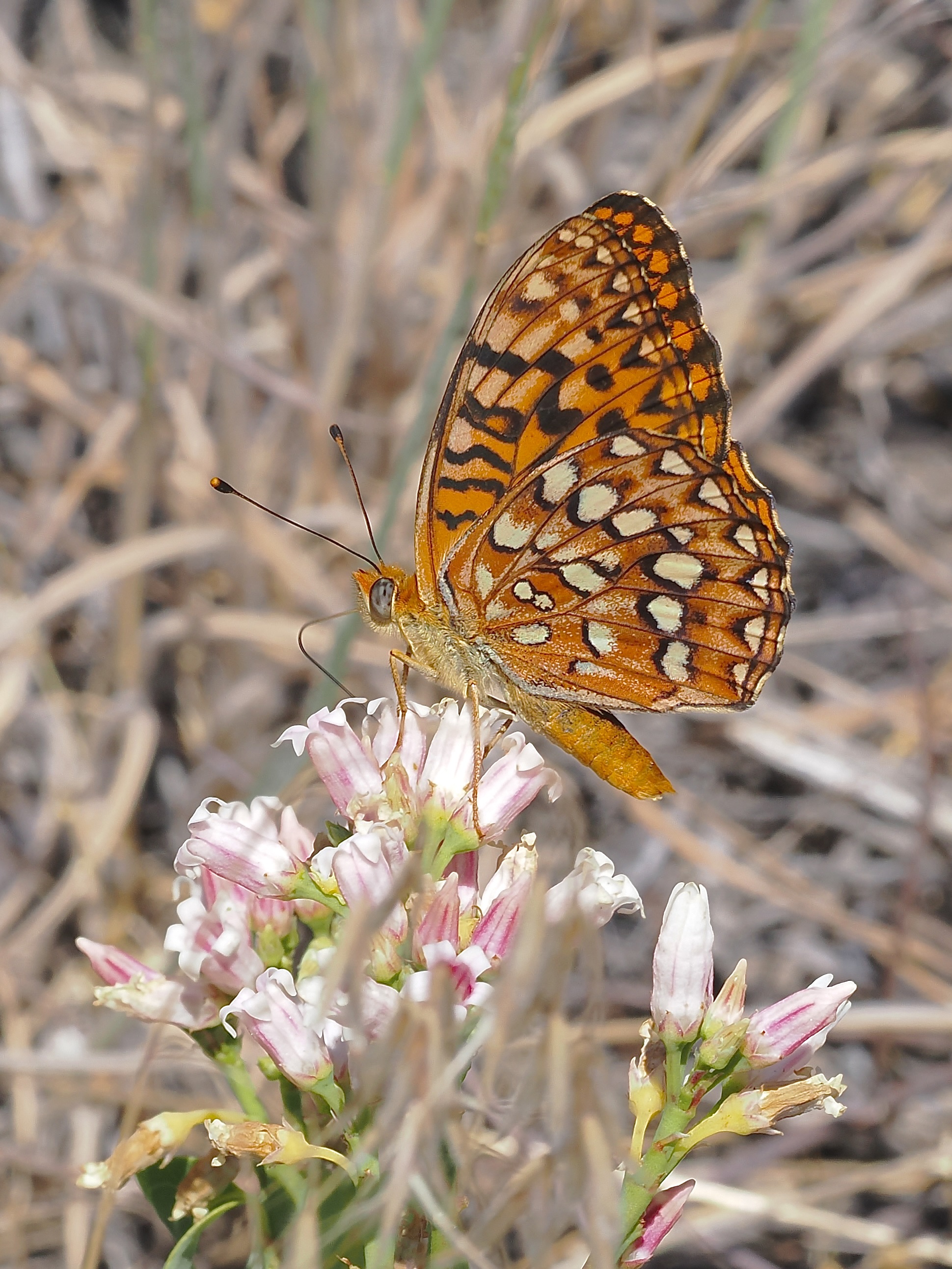Butterflies and Moths of the Sierra Nevada
Dates: June 29-July 4, 2025
Instructor: David Droppers
Fee: $500 + meals and accommodations fees
Term: Summer 2025
Course Description
The Sierra Nevada is rich in butterflies, and the Yuba Pass area is no exception. As many as 70 species of butterflies may be found on a single day by visiting 3 or 4 locations in a sequence of elevations. More than 100 species of butterflies have been located from the lower elevations near Camptonville over the pass to near Graeagle, including the campus itself. We will see swallowtails, parnassians, many kinds of blues, fritillaries, and skippers.
Morning and evening slide talks will supplement the course by including topics such as introduction to butterflies, local butterfly identification, as well as moth diversity and biology. We will study the diversity, identification, ecology and life history of the area's butterflies in several elevational habitats including peaks, flowery meadows, extensive marshland, east side sagebrush and possibly, a carnivorous plant bog.
The instructors will use a variety of methods to observe butterflies, primarily nonlethal, including netting, placing live butterflies in small containers, followed by their release; restraint by forceps; observation with close-focus binoculars; and close-up photography. The goal will be for you to familiarize yourself with the butterfly species seen during class trips and to learn about butterflies of different families and to understand their behavior and ecological place in the environment. You should be able to stalk and study butterflies as well as to take recognizable photos. Some specimen preparation demonstration may be available.


Instructor Bio
David Droppers has been teaching courses on topics from birds to butterflies to trees to microorganisms for a variety of groups, including college biology courses and non-profit environmental groups. He has put his expertise to work for the National park Service, Forest Service, University of Washington, and Woodland Park Zoo, among many others. He is ecstatic about sharing his passion for the natural world with others who wish to learn. His enthusiasm is said to be contagious! David received his Bachelor's degree in Environmental Science and Resource Management from the University of Washington, and his Master's degree in Environmental Education from Western Washington University.
Course Details
Course Schedule
Arrive on Sunday to settle into camp and have dinner by 6.00 pm. The class will meet for an organizational meeting on Sunday evening after dinner. Meet at 8 a.m. Monday through Friday.
We will take short hikes, but on one or two days they may be a bit rigorous. Many of our trips are on Forest Service roads, and participants may be asked to drive or car-pool. We’ll have a morning illustrated lecture, go afield and eat our bag lunch out in nature, and return to camp in the afternoon before dinner. Our first meeting will be informally on Sunday night after dinner. Our class will end at midday on Friday.
Supplies List
Close focusing binoculars (6-9 feet), digital camera or smartphone with imaging capability, notebook, pens, day pack with lunch, water bottle or canteen, sturdy shoes or hiking boots, waterproof boots for the carnivorous plant bog, wide-brimmed hat, sunscreen, repellent. Be ready for inclement weather!
Suggested reading:
- Kaufman Focus Guide, Butterflies of North America, 2003, by Jim P. Brock and Kenn Kaufman.
- The Laws Field Guide to the Sierra Nevada. John Muir Laws. Heyday Books. A richly illustrated guide to a full range of Sierra plants, animals, fungi, and more. Order at Heyday Books
The names used will be based on the above two books.
Lodging and Camping Supplies
Camping gear if you are staying on campus:
- tent and sleeping pad (unless you are staying in our tent with a cot provided)
- warm sleeping bag
- pillow, toiletries, and towel
- flashlight and lantern
- alarm clock
Field gear for everyone:
- day pack
- sunscreen
- insect repellant
- water bottles
- plastic containers for packed lunches
- sense of humor
You might also want to bring:
- camera
- binoculars
- hand lens
- camp chair
Clothing:
The weather in the Sierra Nevada can vary greatly, even in a single day. Be prepared for chilly temperatures at night, even below freezing early in the summer. Rain is a possibility any time, whether forecast or not. Variable weather clothing that can be layered is best: long pants and a long-sleeved shirt, warm sweater and jacket, t-shirt and shorts or skirt, sturdy shoes or hiking boots, sun hat, rain gear, and a warm hat or gloves for cold weather and/or night activities. And, if you come later in the season, bring your swimsuit for afternoon dips in the lakes!